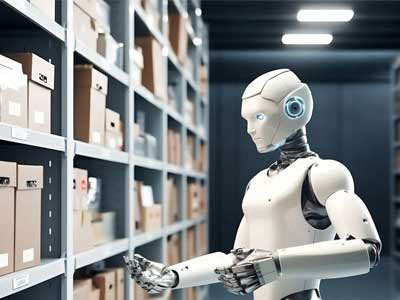Key Takeaway
Real-time control systems in robotics are closed-loop systems that gather and process data instantly to make immediate decisions. These systems use sensors to monitor the environment and the robot’s state. They then process this data quickly and adjust the robot’s actions in real-time. This allows robots to respond accurately to changes and perform tasks with high precision. Real-time control is essential for applications like automated manufacturing, where timing and accuracy are critical. By ensuring robots react promptly, these systems enhance efficiency and reliability in robotic operations.
Definition and Importance
Real-time control systems in robotics are systems designed to process data and provide responses within a strictly defined time frame. These systems are crucial for ensuring that robots can perform tasks with high precision and reliability. The importance of real-time control systems lies in their ability to handle time-sensitive operations, making them essential for applications that require immediate feedback and adjustments. In robotics, real-time control is vital for tasks such as maintaining balance, controlling movement, and interacting with dynamic environments, where any delay could lead to errors or accidents.

Key Components
The key components of real-time control systems in robotics include sensors, actuators, controllers, and communication interfaces. Sensors gather data from the environment, such as position, speed, and force. They act as the robot’s eyes and ears, detecting changes and providing crucial information for decision-making. Actuators are the muscles of the robot, executing movements based on the control signals received. These can include motors and hydraulic systems that enable the robot to perform tasks with precision and strength.
Controllers process sensor data and compute the necessary actions to be taken, often using sophisticated algorithms. They are the brain of the system, ensuring that the robot reacts appropriately to sensory input. Communication interfaces ensure timely and reliable data exchange between these components, forming a cohesive system. This seamless interaction is what enables robots to perform complex tasks accurately and efficiently. When all these elements work in harmony, robots can achieve remarkable feats in various industrial applications.
Control Algorithms
Control algorithms are the heart of real-time control systems, dictating how the robot responds to sensory input. These algorithms ensure the desired outcome by continuously adjusting control signals based on real-time data. The Proportional-Integral-Derivative (PID) control is a common algorithm due to its simplicity and effectiveness in maintaining stable control. It continuously calculates the error value and applies corrections to minimize it, ensuring smooth and accurate movements.
More advanced algorithms, such as Model Predictive Control (MPC) and Adaptive Control, are used in applications requiring higher precision and adaptability. These sophisticated algorithms allow robots to anticipate changes and adjust their actions accordingly, enhancing performance. They are crucial in dynamic environments where conditions can change rapidly. By using these advanced control strategies, robots can achieve higher accuracy and adaptability, making them indispensable in cutting-edge industrial applications.
Applications in Industry
Real-time control systems are pivotal in various industries, transforming how tasks are performed with precision and efficiency. In manufacturing, these systems are used for precise control of robotic arms on assembly lines. This ensures high-quality and consistent output, reducing errors and increasing productivity. Robotic arms can handle delicate components with accuracy, making them ideal for tasks requiring meticulous attention to detail.
In the automotive industry, real-time control systems are integral to autonomous driving technologies. They manage everything from steering to braking in real-time, ensuring safety and precision. These systems analyze vast amounts of data from sensors to make split-second decisions, enabling vehicles to navigate complex environments autonomously. In healthcare, surgical robots rely on real-time control to perform delicate procedures with unmatched precision, improving patient outcomes. Additionally, in logistics, automated guided vehicles (AGVs) and drones depend on these systems for efficient and safe navigation, optimizing warehouse operations and delivery services.
Future Trends
The future of real-time control systems in robotics is set to be driven by advancements in artificial intelligence (AI) and machine learning (ML). These technologies will enhance the adaptability and intelligence of control systems, allowing robots to learn from experience and improve their performance over time. AI-powered control systems will enable robots to handle more complex tasks and adapt to new situations without human intervention, making them more autonomous and efficient.
The integration of IoT (Internet of Things) will enable more connected and collaborative robotic systems. This will allow robots to communicate with each other and with other devices, further enhancing their capabilities. Advancements in hardware, such as more powerful processors and sensors, will support more complex and faster control algorithms. This will push the boundaries of what robots can achieve in real-time, enabling them to perform tasks that were previously impossible. The future of robotics is bright, with real-time control systems at the forefront of this technological revolution.
Conclusion
Real-time control systems are indispensable in the field of robotics, providing the necessary framework for precise, reliable, and adaptive robotic operations. Their ability to process data and respond instantly is crucial for applications across various industries, from manufacturing to healthcare. As technology continues to evolve, real-time control systems will become even more advanced, integrating AI, IoT, and enhanced hardware capabilities. This will pave the way for smarter, more efficient, and highly adaptive robots, capable of performing increasingly complex tasks with unparalleled accuracy and reliability.
